Simple Visualizations Show How COVID-19 Spreads In Rooms, Bars, And Classrooms And How It Can Be Avoided
We already know that the coronavirus can be transmitted in the air through aerosols—particles that an infected person breathes out. The particles can remain in the air for hours, creating a high chance of infecting people indoors. However, as we spend more and more time indoors as the weather cools down, it’s important to calculate how much risk is involved in spending time with people between four walls.
Therefore, in videos done by Luis Almodóvar and shared by the Spanish newspaper El País, journalists Mariano Zafra and Javier Salas examine three common indoor situations. The visualizations, based on a model called the Estimator, demonstrate how the virus can spread through the air if someone in the room has coronavirus. The Estimator was created by the University of Colorado Boulder chemistry professor Jose-Luis Jimenez, and it approximates how aerosols containing Covid-19 move in indoor spaces.
More info: El País
The Spanish newspaper El País examined three possible scenarios of the coronavirus spreading indoors
[1/7] The coronavirus is spread through the air, especially in indoor spaces, and scientists now openly acknowledge the role played by aerosols in the pandemic. EL PAÍS recreated three common settings to see how contagion works, and above all how to prevent it
pic.twitter.com/72g6IEDSkb
— El País English Edition (@elpaisinenglish) October 28, 2020
Image credits: elpaisinenglish
For example, one of the visualizations examines the outcomes of a social gathering of six people in an unventilated living room. Even when proper social distancing is applied, if one person in the room is infected and they all spend 4 fours together speaking loudly, the model predicts that five people will get infected. Even mask-wearing doesn’t make a huge difference according to the scenario, due to the prolonged exposure to the virus. However, if all the people in the room that’s ventilated wear masks and the gathering lasts 2 hours instead of 4, the risk drops significantly.
The first setting involved people in a living room
[2/7] The first setting is a gathering of six people inside a living room, where one of the individuals is infected. Regardless of the distance between them, if they are not wearing face masks and the space is not ventilated, everyone will be infected within four hours pic.twitter.com/exjDIRuWfh
— El País English Edition (@elpaisinenglish) October 28, 2020
Image credits: elpaisinenglish
The second setting examined the spread of the virus in a bar
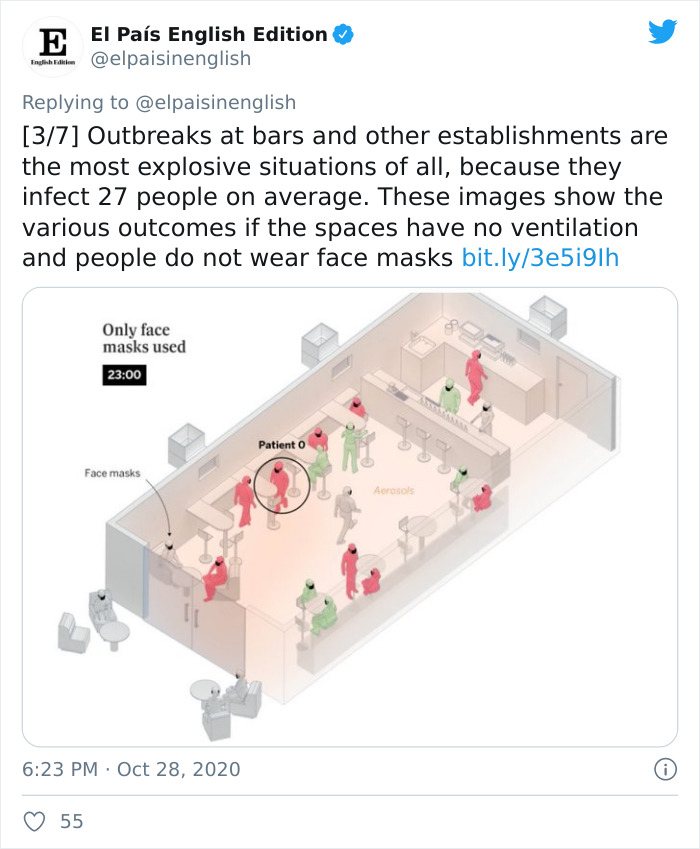
Image credits: elpaisinenglish
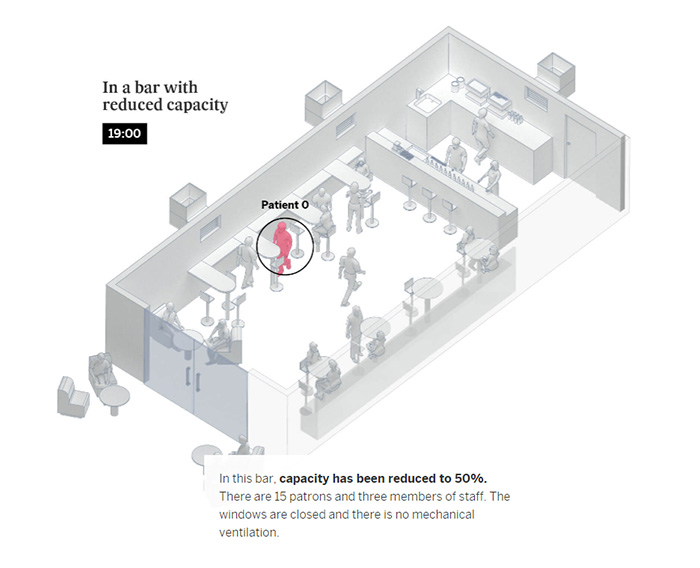
Image credits: El País
“In this bar, capacity has been reduced to 50%. There are 15 patrons and three members of staff. The windows are closed and there is no mechanical ventilation.”
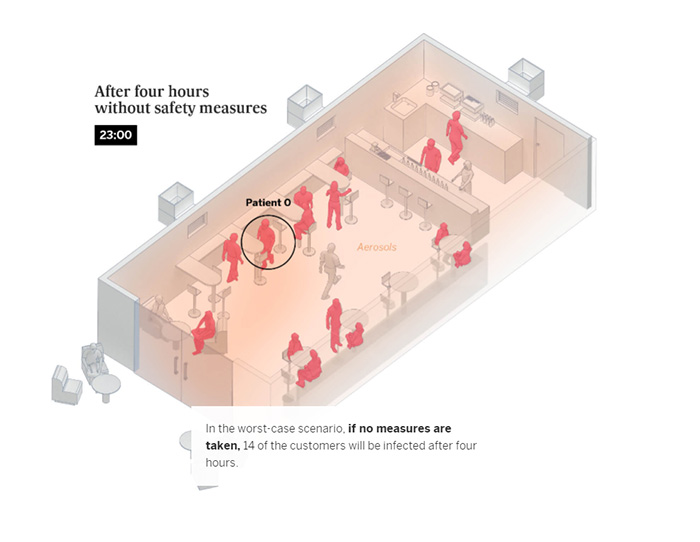
Image credits: El País
“In the worst-case scenario, if no measures are taken, 14 of the customers will be infected after four hours.”
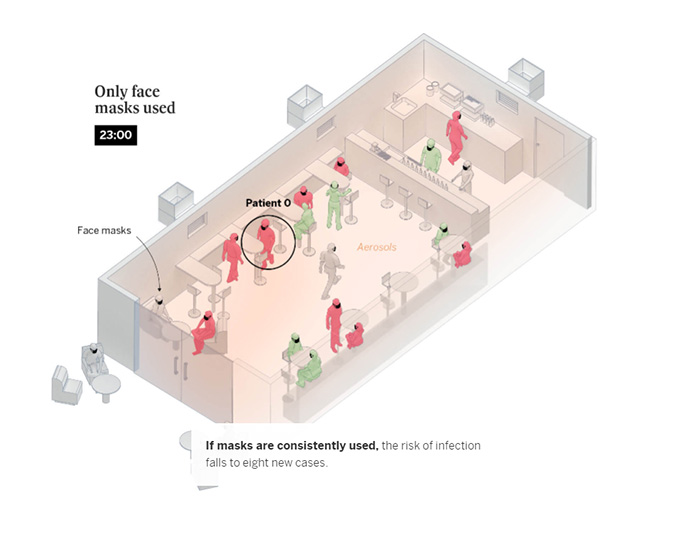
Image credits: El País
“If masks are consistently used, the risk of infection falls to eight new cases.”
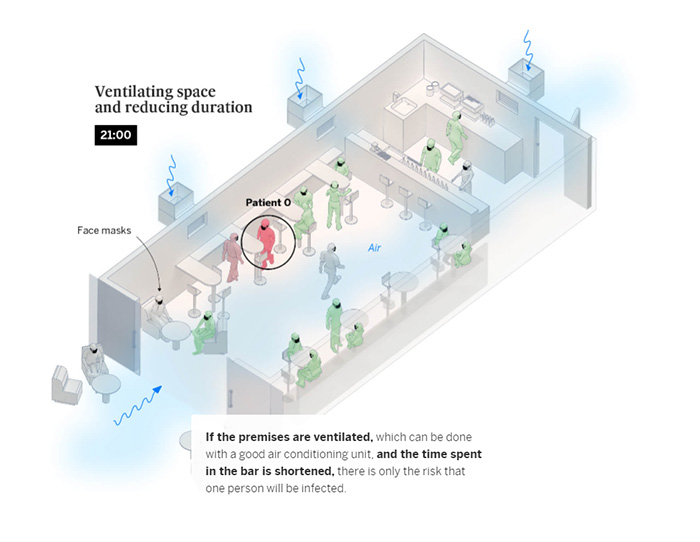
Image credits: El País
“If the premises are ventilated, which can be done with a good air conditioning unit, and the time spent in the bar is shortened, there is only the risk that one person will be infected.”
The last setting looked into the possibilities of spreading the virus in a classroom
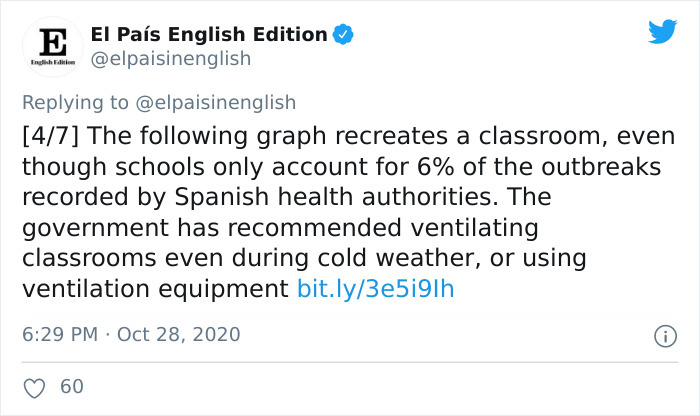
Image credits: elpaisinenglish
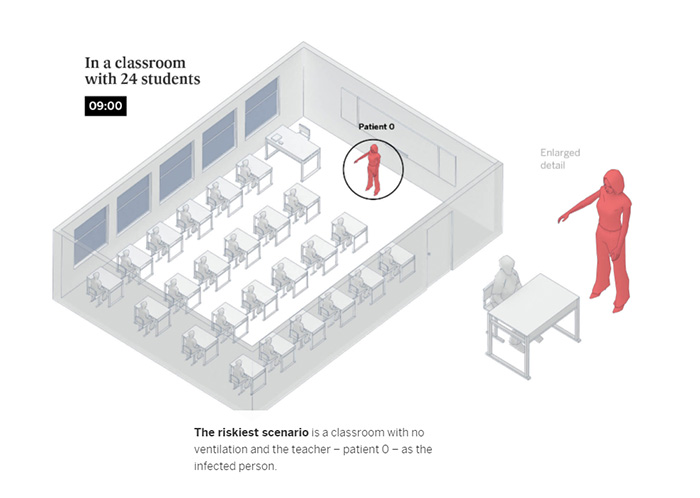
Image credits: El País
“The riskiest scenario is a classroom with no ventilation and the teacher – patient 0 – as the infected person”
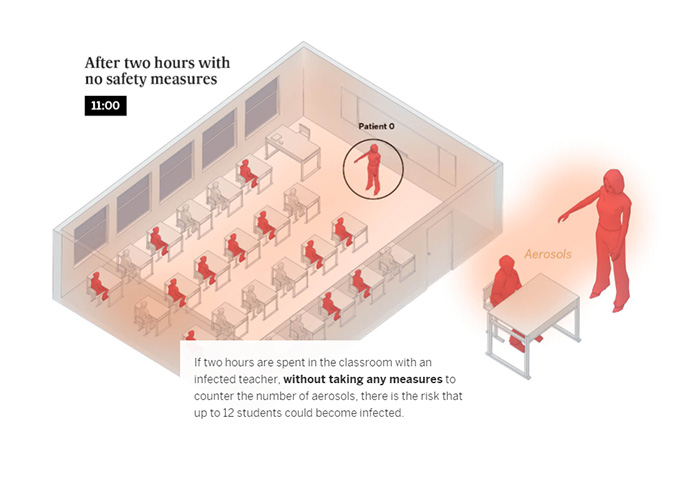
Image credits: El País
“If two hours are spent in the classroom with an infected teacher, without taking any measures to counter the number of aerosols, there is the risk that up to 12 students could become infected.”
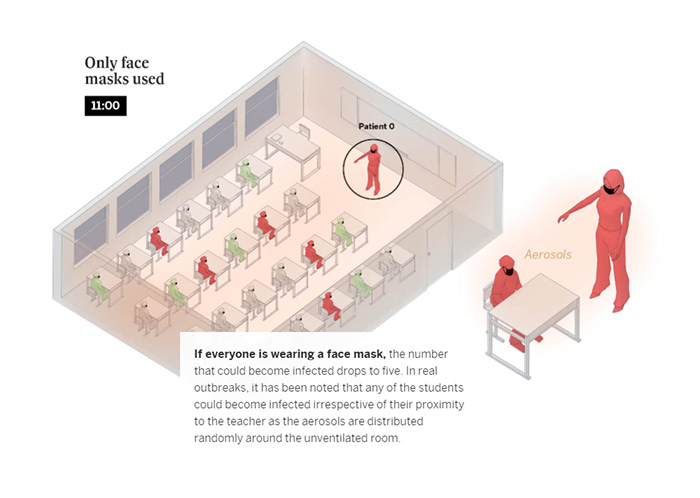
Image credits: El País
“If everyone is wearing a face mask, the number that could become infected drops to five. In real outbreaks, it has been noted that any of the students could become infected irrespective of their proximity to the teacher as the aerosols are distributed randomly around the unventilated room.”
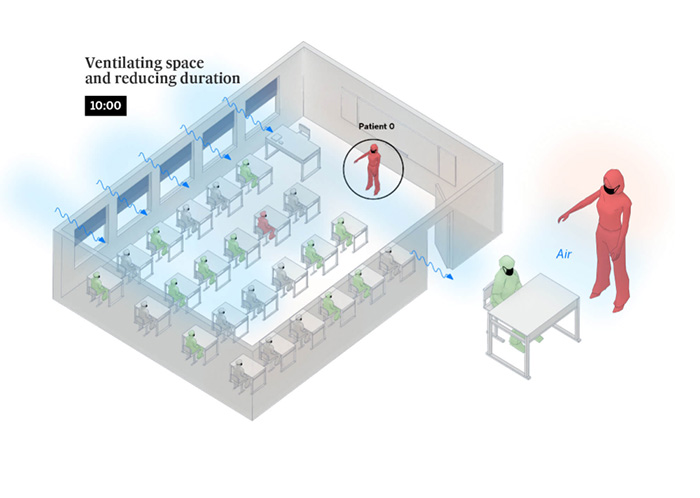
Image credits: El País
The experts also examined how many particles we emit when silent, talking, or shouting/singing
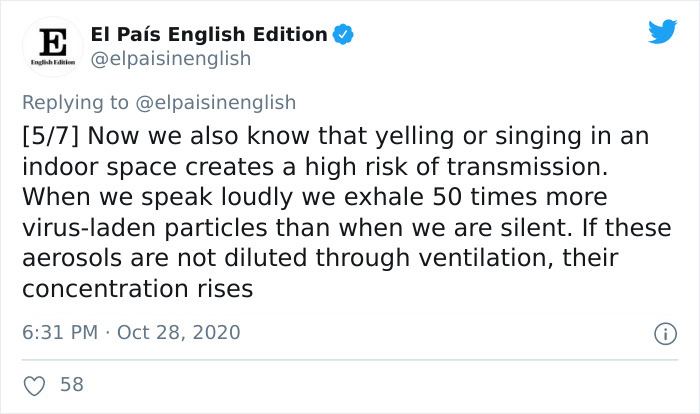
Image credits: elpaisinenglish
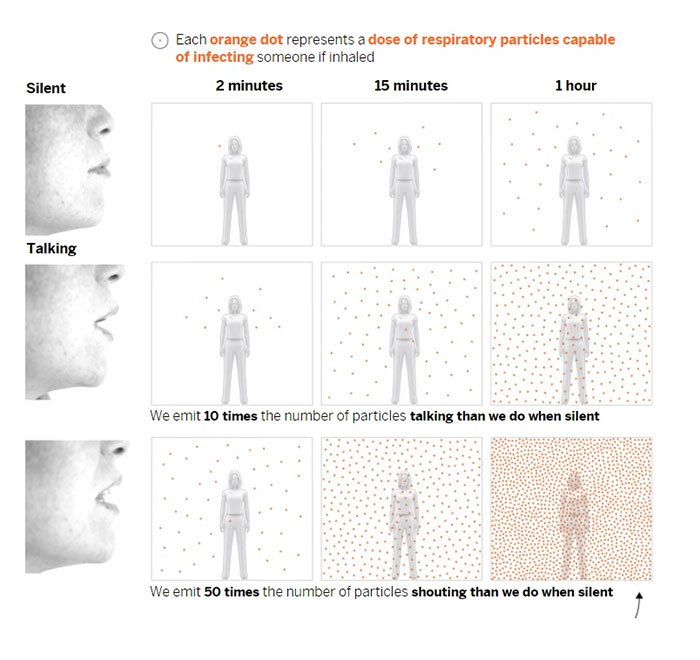
Image credits: El País
“The Estimator assumes that people practice the two-meter social distancing rule and that no one is immune. Our calculation is based on a default value for the general population, which includes a wide range of masks (surgical and cloth), and a loud voice, which increases the amount of aerosols expelled,” the experts behind the study explain.
Head on to El País to find more visualizations and information.

No comments